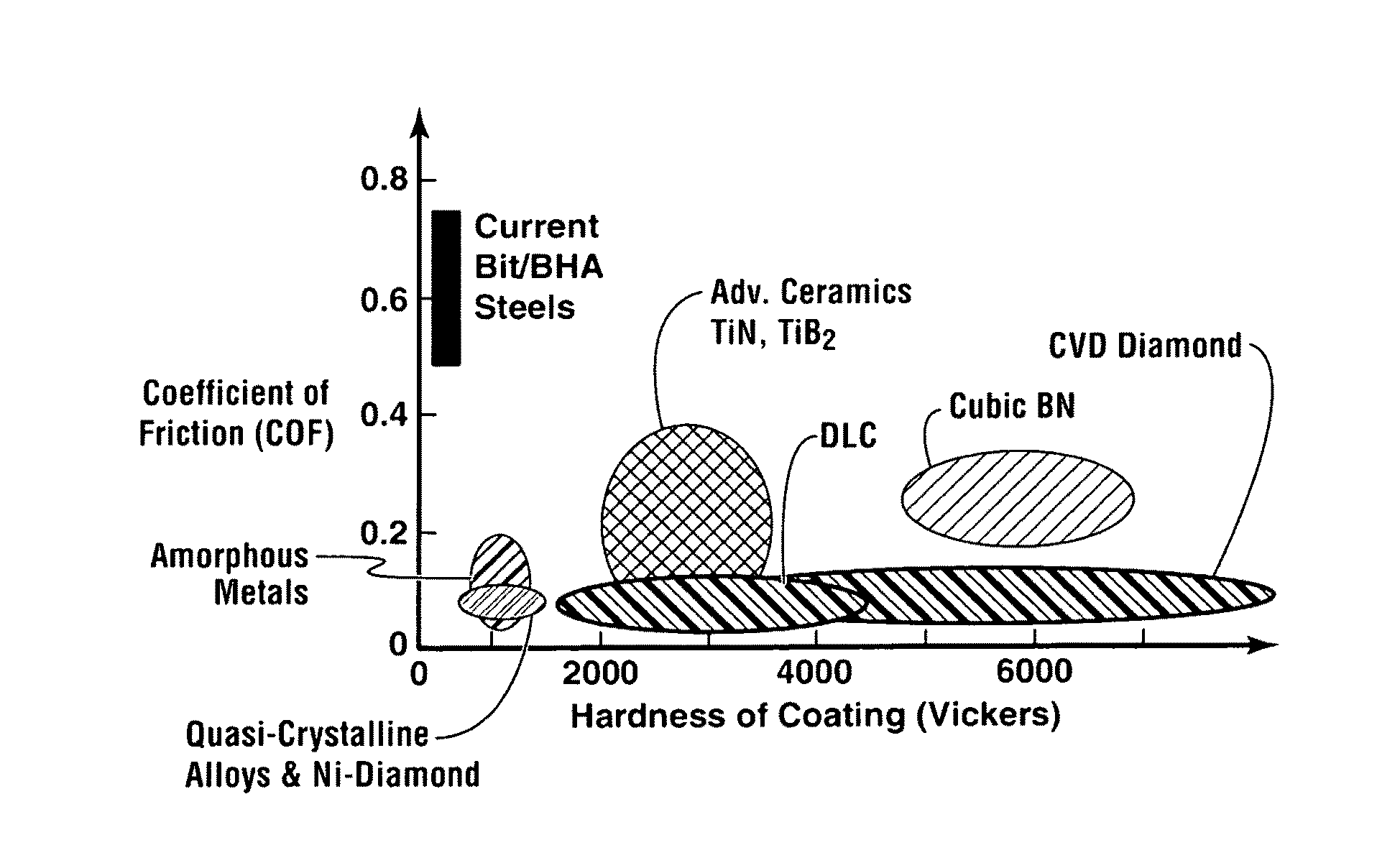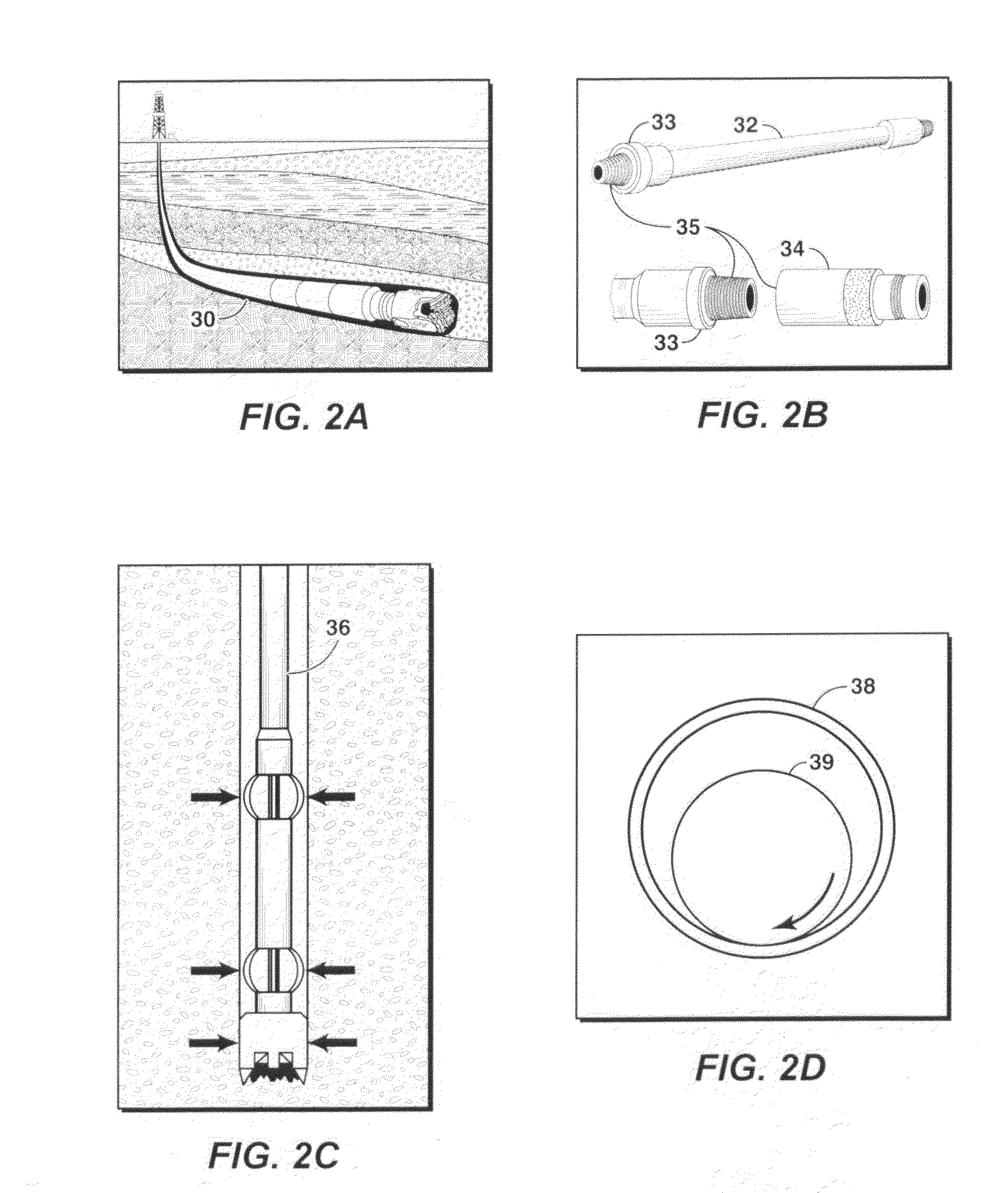Coated sleeved oil and gas well production devices
a technology for oil and gas wells and sleeves, applied in the direction of drilling casings, drilling pipes, borehole/well accessories, etc., can solve the problems of device wear, deformation, device wear, etc., and achieve the effect of reducing friction, wear, corrosion, erosion and deposits
- Summary
- Abstract
- Description
- Claims
- Application Information
AI Technical Summary
Benefits of technology
Problems solved by technology
Method used
Image
Examples
example 1
Illustrative Example 1
[0267]DLC coatings were applied on 4142 steel substrates by vapor deposition technique. DLC coatings had a thickness ranging from 1.5 to 25 micrometers. The hardness was measured to be in the range of 1,300 to 7,500 Vickers Hardness Number. Laboratory tests based on ball on disk geometry have been conducted to demonstrate the friction and wear performance of the coating. Quartz ball and mild steel ball were used as counterface materials to simulate open hole and cased hole conditions respectively. In one ambient temperature test, uncoated 4142 steel, DLC coating and commercial state-of-the-art hardbanding weld overlay coating were tested in “dry” or ambient air condition against quartz counterface material at 300 g normal load and 0.6 m / sec sliding speed to simulate an open borehole condition. Up to 10 times improvement in friction performance (reduction of friction coefficient) over uncoated 4142 steel and hardbanding could be achieved in DLC coatings as shown...
example 2
Illustrative Example 2
[0272]In the laboratory wear / friction testing, the velocity dependence (velocity weakening or strengthening) of the friction coefficient for a DLC coating and uncoated 4142 steel was measured by monitoring the shear stress required to slide at a range of sliding velocity of 0.3 m / sec˜1.8 m / sec. Quartz ball was used as a counterface material in the dry sliding wear test. The velocity-weakening performance of the DLC coating relative to uncoated steel is depicted in FIG. 23. Uncoated 4142 steel exhibits a decrease of friction coefficient with sliding velocity (i.e. significant velocity weakening), whereas DLC coatings show no velocity weakening and indeed, there seems to be a slight velocity strengthening of COF (i.e. slightly increasing COF with sliding velocity), which may be advantageous for mitigating torsional instability, a precursor to stick-slip vibrations.
example 3
Illustrative Example 3
[0273]Multi-layered DLC coatings were produced in order to maximize the thickness of the DLC coatings for enhancing their durability for drill stem assemblies used in drilling operations. In one form, the total thickness of the multi-layered DLC coating varied from 6 μM to 25 μm. FIG. 24 depicts SEM images of both single layer and multilayer DLC coatings for drill stem assemblies produced via PECVD. An adhesive layer(s) used with the DLC coatings was a siliceous buffer layer.
PUM
 Login to View More
Login to View More Abstract
Description
Claims
Application Information
 Login to View More
Login to View More - R&D
- Intellectual Property
- Life Sciences
- Materials
- Tech Scout
- Unparalleled Data Quality
- Higher Quality Content
- 60% Fewer Hallucinations
Browse by: Latest US Patents, China's latest patents, Technical Efficacy Thesaurus, Application Domain, Technology Topic, Popular Technical Reports.
© 2025 PatSnap. All rights reserved.Legal|Privacy policy|Modern Slavery Act Transparency Statement|Sitemap|About US| Contact US: help@patsnap.com



